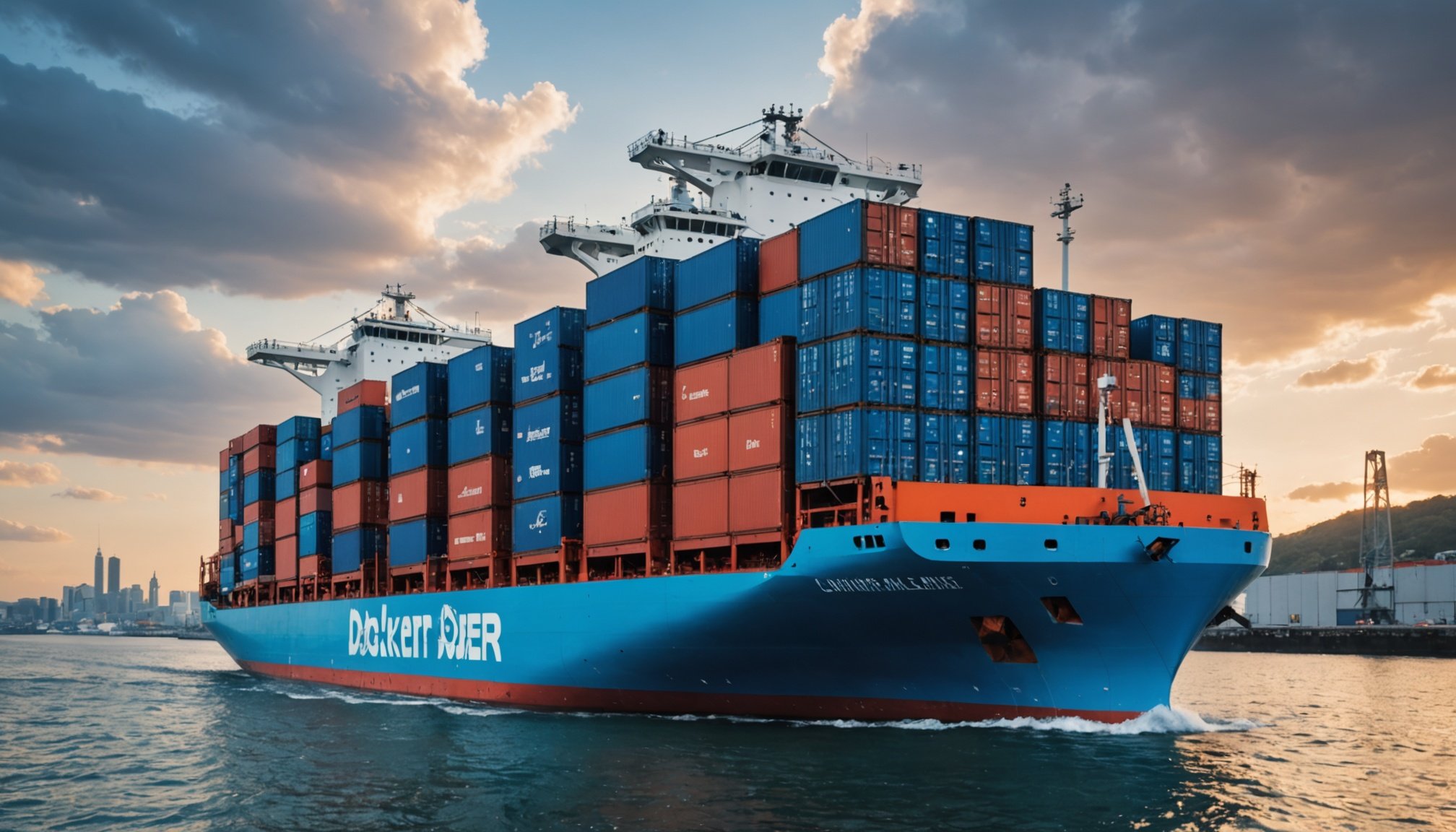Understanding Docker Containers in AI Development
Docker containers have become integral in the realm of AI model development. By providing isolated environments, they allow developers to work on AI models with consistent performance across different systems. This centralized approach not only simplifies development but ensures an environment free from conflicts that may arise in traditional environments.
The primary benefit of using Docker containers lies in their ability to isolate development environments efficiently. This isolation means that AI models can be developed, tested, and scaled without disrupting existing systems. Developers can, thus, deploy and manage applications without worrying about the underlying infrastructure discrepancies.
Additional reading : Revolutionizing aviation: unleashing advanced ai technologies for predictive maintenance solutions
Containerization offers a robust alternative to traditional environments, where security can often become a concern due to shared resources. Docker’s architecture emphasizes Docker security, making it a preferred choice by reducing potential vulnerabilities. Security features include the use of namespaces and control groups which ensure that containers remain separated and not compromised by external factors.
In conclusion, adopting Docker technology in AI model development provides a massive leap forward in both efficiency and security, driving its widespread adoption among developers and businesses alike.
Topic to read : Ai-driven real-time cyber threat detection and prevention: elevating security solutions for a safer digital future
Best Practices for Securing Docker Containers
Understanding Docker security best practices is vital for protecting container environments. One of the fundamental principles is applying least privilege policies. This means restricting permissions so that containers only have access to the resources they absolutely need. By reducing the capabilities of containers, potential attackers have fewer opportunities to exploit vulnerabilities.
Container hardening involves minimizing the attack surface. A practical way to achieve this is through image scanning. Before deploying, Docker images should be scanned to detect potential security issues or malicious code. By using tools that perform regular scans, any vulnerabilities can be identified and mitigated promptly.
It’s also crucial to keep your Docker images up-to-date. Conducting regular updates and vulnerability assessments ensures that your containerized applications are shielded against recent threats. Automating these processes helps maintain a secure environment, as new vulnerabilities are continuously emerging.
Implementing secure configurations, coupled with these practices, significantly heightens the security posture of Docker containers. Ensuring containers operate in isolation with minimal permissions, staying proactive with image scanning, and adhering to frequent updates and assessments are key components for robust security measures.
Implementing Network Security for Docker Containers
Ensuring network security in Docker environments is crucial, especially as Docker networking capabilities expand. A foundational step is implementing strategies for securing inter-container communication. This involves configuring correct network policies to restrict traffic between containers, ensuring only authorised connections are established.
Leveraging Docker’s built-in network drivers plays a pivotal role in maintaining container isolation. These drivers enable you to create isolated networks, ensuring that containers within specific services can only communicate with others within the designated network. This segregation helps prevent unauthorised access and enhances overall security.
Beyond drivers, configuring firewalls is another vital measure. The use of firewalls can block unwanted traffic and reduce the potential attack surface. Setting up rules that only permit necessary traffic between Docker containers or from external sources is a practical approach that many network administrators endorse.
Additionally, monitoring network activity is essential. Keeping an eye on the data flow can help detect anomalies or potential breaches early. Employing tools for real-time monitoring and alerts ensures that any irregular behaviour is swiftly addressed, bolstering your security posture further. Through these methods, network security within Docker containers can be both robust and reliable.
Data Protection Strategies in Docker
Implementing robust data protection strategies in Docker environments is crucial for safeguarding sensitive data. A primary method is data encryption. Employing encryption ensures that data at rest and in transit remains secure within containers. This not only prevents unauthorized access but also enhances data integrity.
For container storage security, storing sensitive information like API keys requires diligent management. Best practices include using environment variables or secret management tools to handle these keys, ensuring they are not embedded directly in your container images.
Integrating volume management and backup solutions is another essential strategy. By effectively managing container volumes, you can ensure consistent data accessibility and security. Backup solutions help in protecting against data loss, keeping your data recoverable even in the case of system failures or breaches.
These strategies form the backbone of a secure Docker environment, safeguarding sensitive data while promoting seamless operations. Adopting these practices not only mitigates risks but also establishes a reliable infrastructure for managing sensitive data within Docker containers.
Monitoring and Logging for Docker Security
Effective container monitoring is a cornerstone of maintaining secure Docker environments. Centralized security logging is essential, as it captures activities across all containers, providing a cohesive view of potential threats. By setting up a centralized system, security teams can swiftly identify and respond to breaches, ensuring that no suspicious behavior goes unnoticed.
Monitoring is crucial not just for tracking regular activity but also for catching signs of anomalies or intrusions. Threat detection relies on spotting these deviations from the norm, and with the right monitoring tools, this process becomes significantly streamlined. Detecting unexpected spikes in resource usage or unauthorized network connections can indicate potential compromises, which can then be addressed proactively.
Several tools and frameworks exist to bolster container monitoring efforts. Options like Prometheus and Grafana offer customizable solutions that integrate well with Docker environments, providing real-time visibility. Additionally, using open-source solutions such as Falco facilitates security-focused monitoring by defining rulesets that alert teams of violations or unusual activities.
By utilizing these tools effectively, organizations can enhance their security posture, ensuring robust monitoring and logging methods are in place to protect against threats. This proactive approach is fundamental for maintaining a secure and resilient operational environment.
Case Studies of Successful Docker Implementations
The world of real-world applications has been revolutionised by Docker, particularly in the domain of AI model development. Many companies have their success stories to share on using Docker to enhance AI workflows. These implementations demonstrate how Docker facilitates containerisation, leading to streamlined deployments and efficient resource management.
For instance, a leading tech company leveraged Docker to improve their machine learning models, facing initial challenges with scalability and integration. By employing Docker, they could better manage complex dependencies, leading to significant performance boosts. The real genius was in how they used Docker’s microservices to slice cumbersome AI models into more manageable parts, simplifying updates and debugging processes.
Similarly, in another example, a financial institution moved their AI-driven analytics to a Dockerised infrastructure. They initially dealt with deployment issues, primarily due to platform inconsistencies across different servers. Docker’s containerisation provided a uniform environment that solved these issues, enhancing their system’s reliability and speed.
Key takeaways from these implementations include understanding the importance of Docker in handling scalability challenges and ensuring consistency across various platforms. These cases underscore Docker’s potential to transform AI development processes, highlighting valuable lessons learned for other organisations looking to optimise their AI endeavours.
Future Trends in Docker Security for AI Models
As the future of Docker unfolds, we anticipate notable advancements in its security features specifically tailored for AI models. One significant AI development trend is the integration of intelligent algorithms to autonomously identify and mitigate security vulnerabilities. This evolution ensures that container environments remain robust against emerging threats.
The role of AI in augmenting Docker’s security cannot be overstated. AI technologies are increasingly being employed to develop evolving security measures. By analyzing vast datasets, these intelligent systems predict potential breaches, offering real-time protective adjustments. This synergy between AI and Docker not only fortifies security but also enhances operational efficiency.
Furthermore, upcoming regulations and standards are set to impact Docker usage profoundly. As governments and industry bodies recognise the criticality of secure containers, new compliance mandates are emerging. These regulations are directing focus towards evolving security measures that ensure data integrity and privacy. Organisations utilising Docker must remain vigilant, adapting processes to meet these dynamic demands. As these trends converge, understanding and implementing them is crucial for safeguarding AI-enhanced Docker environments today and in the future.











